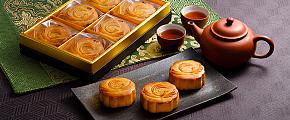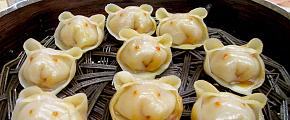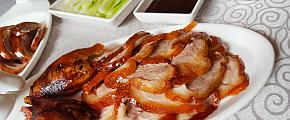Drinks and Snacks of China - Alcoholic Drinks(jiu, wine)
China is one of the first countries to have invented alcohol. A large number of pottery wine vessels were discovered in Shandong at the ruins of the Dawenkou culture which dates back more than 5,000 years, and recorded history talks about winemaking techniques of more than 4,000 years ago. The earliest wines were made from food grains, mainly rice, broomcorn, and millet. As a result of improvements in brewing skills, yellow wine made its appearance during the Warring States Period (475-221 B.C.).
 Chinese Alcohol
Chinese Alcohol
From an ancient tomb of the Warring States Period in Pingshan County of Hebei Province, large numbers of wine-storing and drinking vessels were excavated in the 1970s. Two of them contain an alcoholic drink made from wheat 2,280 years ago. It is probably the oldest liquor ever discovered. It is unknown how they managed to make alcohol that could survive so long. At that time most alcohols had a shelf life of only a few days before they would go bad.
Maotai (Guizhou Province) is the national liquor in China, and one of the most famous liquors in the world, along with Scottish Whisky, French Brandy, and Russian Vodka.
Well-Known Drinks in China
Mao-tai has always been at the top of any listing of China's famous drinks. It is named after the small town of Mao-tai in Guizhou Province where it is produced. Being almost indispensable at state banquets held in Beijing or official receptions given by Chinese envoys abroad, Mao-tai used to be the “national drink” or “diplomatic drink” of the country. It is considered a necessary drink when friends and relatives gather on holidays or other festive occasions. But owing to the big gap between supply and demand, its price has gone up greatly in recent years. Mao-tai is made from high-quality gaoIiang (Chinese sorghum). The distiller's yeast is prepared from wheat, and water from a local spring which gives Mao-tai its unique taste. Unique, too, is its manufacturing process, which consists of eight distillations, and as many periods of fermentation, each lasting more than a month, followed by the addition of yeast. So the whole process takes more than eight months. It is then aged for three years before it is allowed to be sold. Mao-tai is crystal clear. Though a potent drink, it never leaves a burning feeling in the mouth or throat, nor does it upset the stomach.
Since ancient times it has been a favorite drink of poets and other people of artistic penchant. They believe that before putting their writing or paint brushes to paper, they must first find inspiration from a cup of Mao-tai.
Most Popular Tour Package All Around China
Yellow alcohol, a specialty of China, was produced as early as 4,000 years ago. Made of glutinous rice or broomcorn millet, it has an alcohol content of 15-20%. It is called “yellow alcohol” because of its amber color. Traditionally, yellow alcohol is drunk warm. It is heated in a metal (usually, brass or pewter) wine pot before it is served. It is believed that warm alcohol is appetizing and good for the stomach.
The best yellow alcohol is made in Shaoxing, Zhejiang Province, and is generally known as Shaoxi Laojiu after the name of the place. A local custom handed down from ages is to make or buy a few jars of yellow alcohol at the birth of a baby and store them away sealed with mud in the family cellar till the child's wedding when it will be served to the guests. Matured in the jars for some twenty years, the alcohol has refined color, smell, and taste. Yellow Alcohol is also an important condiment in Chinese cooking. A spoon or two of yellow alcohol in the preparation of a dish will enhance the taste of meat and fish, adding a subtle flavor.
Quick Question
Related Posts You May Like
What Our Clients Say
SUBSCRIBE TO WIN A FREE TOUR
Subscribe to our newsletter for a chance to win a free 7-day Morocco tour! And more insider travel news, exclusive offers, and inspiration will be sent straight to your inbox.






